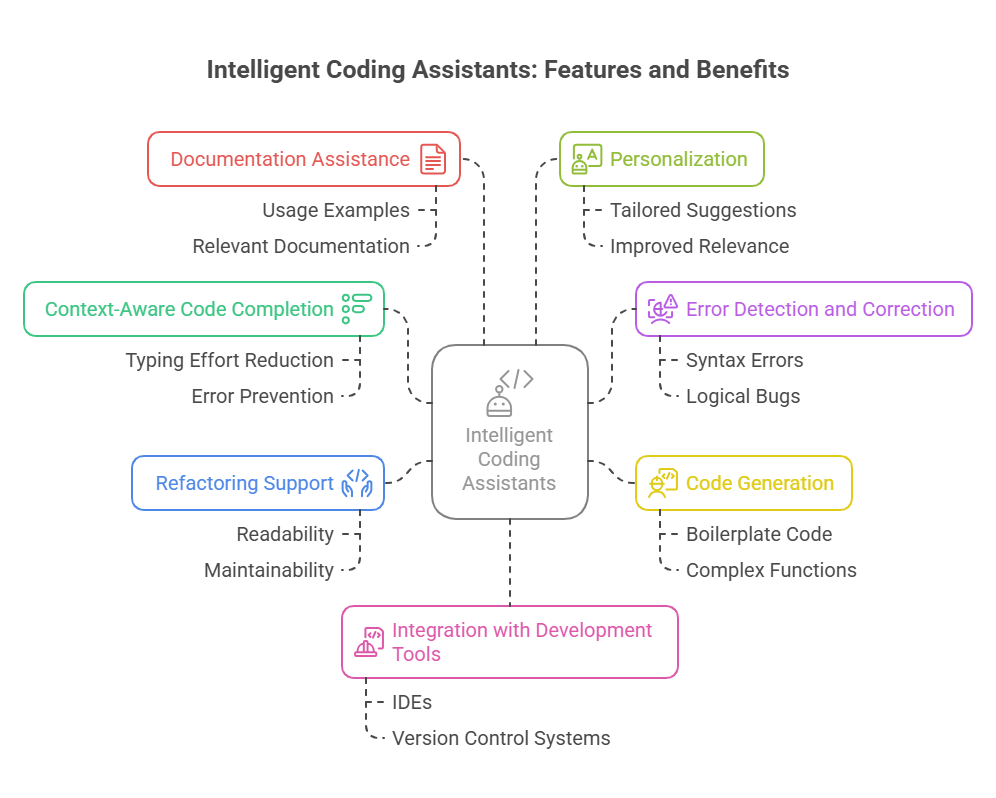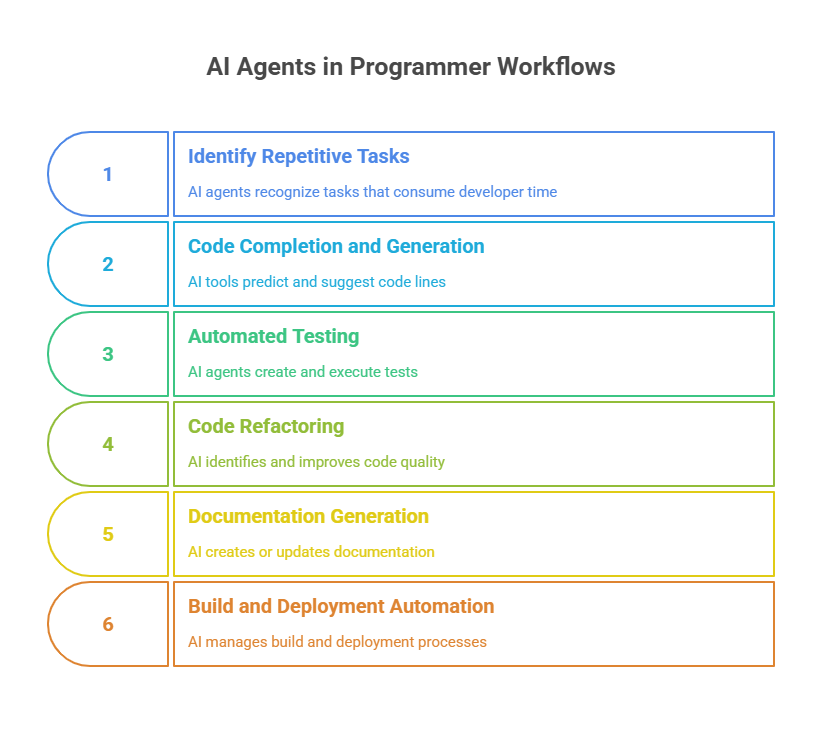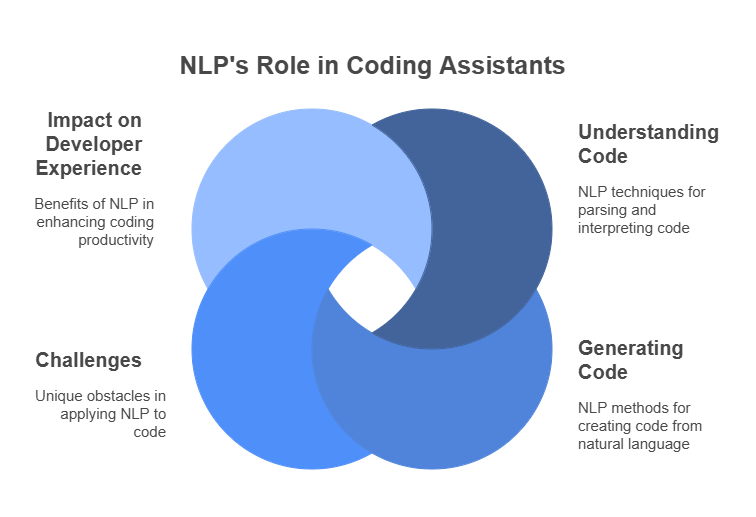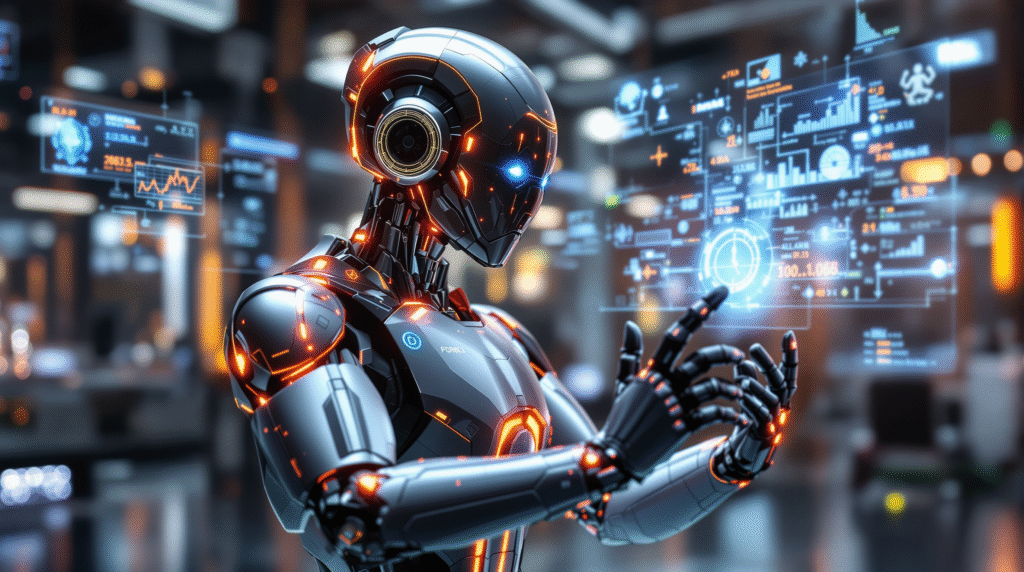Introduction: The Role of Intelligent Coding Assistants in Modern Development
In today’s fast-paced software development landscape, intelligent coding assistants have emerged as vital tools that enhance programmer productivity, code quality, and collaboration. These assistants leverage advances in artificial intelligence (AI), machine learning, and natural language processing to provide real-time support during coding tasks.
The primary role of intelligent coding assistants is to act as proactive partners for developers. They help automate repetitive tasks such as code completion, error detection, and refactoring suggestions, allowing programmers to focus on higher-level design and problem-solving. By understanding the context of the code and the developer’s intent, these assistants can offer relevant recommendations, speeding up the development process and reducing the likelihood of bugs.
Moreover, intelligent coding assistants facilitate learning and knowledge sharing. They can provide explanations, documentation snippets, and best practice guidelines, which are especially valuable for junior developers or those working with unfamiliar technologies. This support helps flatten the learning curve and promotes consistent coding standards across teams.
In collaborative environments, coding assistants can integrate with version control systems and continuous integration pipelines to enforce code quality and streamline reviews. Their ability to analyze large codebases and detect potential issues early contributes to more maintainable and robust software.
As software projects grow in complexity, the demand for intelligent coding assistants continues to rise. Their evolving capabilities not only improve individual developer efficiency but also transform team workflows and software delivery cycles. Understanding their role is essential for developers and organizations aiming to leverage AI-driven tools to stay competitive and innovate faster.
Understanding Coding Assistants: Definitions and Key Features
Intelligent coding assistants are AI-powered tools designed to support developers throughout the software development lifecycle by providing context-aware help, automating routine tasks, and enhancing code quality. Unlike traditional code editors or simple autocomplete features, these assistants leverage advanced algorithms to understand code semantics, developer intent, and project context.
Key Definitions:
Coding Assistant: A software tool that aids programmers by offering suggestions, error detection, code generation, and other forms of assistance during coding.
Intelligent Coding Assistant: An advanced coding assistant that uses artificial intelligence techniques such as machine learning, natural language processing, and pattern recognition to provide smarter, adaptive, and personalized support.
Core Features of Intelligent Coding Assistants:
Context-Aware Code Completion: Suggests relevant code snippets, functions, or variables based on the current coding context, reducing typing effort and errors.
Error Detection and Correction: Identifies syntax errors, logical bugs, or potential vulnerabilities in real-time and offers fixes or recommendations.
Code Generation: Automatically generates boilerplate code, repetitive structures, or even complex functions based on high-level descriptions or examples.
Refactoring Support: Helps restructure existing code to improve readability, maintainability, and performance without changing its behavior.
Documentation Assistance: Provides inline explanations, usage examples, and links to relevant documentation to aid understanding.
Personalization: Learns from the developer’s coding style and preferences to tailor suggestions and improve relevance over time.
Integration with Development Tools: Seamlessly works within IDEs, version control systems, and CI/CD pipelines to enhance the overall development workflow.
By combining these features, intelligent coding assistants not only speed up coding but also help maintain high standards of code quality and consistency. Their ability to adapt and learn makes them valuable companions for developers at all skill levels, from beginners to experts.

Core Technologies Behind Intelligent Coding Assistants
The effectiveness of intelligent coding assistants relies heavily on a combination of advanced technologies that enable them to understand, generate, and improve code in a meaningful way. This section explores the key technologies that form the foundation of these assistants.
- Natural Language Processing (NLP)
NLP allows coding assistants to interpret and generate human language, which is essential for understanding comments, documentation, and even high-level instructions provided by developers. Techniques such as tokenization, parsing, and semantic analysis help the assistant comprehend code-related queries and generate relevant responses or code snippets.
- Machine Learning (ML)
Machine learning models, especially deep learning architectures, enable coding assistants to learn patterns from vast amounts of code data. By training on open-source repositories, documentation, and developer interactions, these models can predict the next lines of code, detect anomalies, and personalize suggestions based on individual coding styles.
- Code Analysis and Static Analysis Tools
Static analysis techniques examine source code without executing it to identify potential errors, security vulnerabilities, or code smells. Integrating these tools allows coding assistants to provide real-time feedback and automated fixes, improving code quality and reliability.
- Language Models and Transformers
Recent advances in transformer-based models (e.g., GPT, BERT) have revolutionized code generation and understanding. These models excel at capturing long-range dependencies in code and natural language, enabling assistants to generate coherent code blocks, refactor code, and answer complex programming questions.
- Reinforcement Learning
Some intelligent assistants use reinforcement learning to improve their performance through interaction with developers. By receiving feedback on suggestions, the assistant can adapt its behavior to better align with user preferences and project requirements.
- Integration Frameworks and APIs
To function seamlessly within development environments, coding assistants rely on integration frameworks and APIs that connect them to IDEs, version control systems, and build tools. This connectivity ensures that assistance is contextually relevant and available at the right moment in the developer’s workflow.
- Cloud Computing and Edge Processing
Many coding assistants leverage cloud infrastructure to access powerful computational resources and large datasets. Some also use edge processing to provide low-latency responses directly within the developer’s environment, balancing performance and privacy.
How AI Agents Automate Repetitive Tasks
AI agents play a crucial role in optimizing programmer workflows by automating repetitive and time-consuming tasks. These tasks, while necessary, often consume valuable developer time and mental energy that could be better spent on creative problem-solving and complex coding challenges.
One of the most common applications of AI agents is code completion and generation. Modern AI-powered tools can predict the next lines of code as developers type, suggest entire functions, or even generate boilerplate code based on high-level descriptions. This not only speeds up coding but also reduces syntax errors and enforces coding standards.
Automated testing is another area where AI agents excel. They can generate unit tests, integration tests, and even simulate user interactions to ensure comprehensive coverage. By automating test creation and execution, AI agents help maintain code quality and catch bugs early in the development cycle.
AI agents also assist with code refactoring, identifying code smells, redundant patterns, or inefficient constructs and suggesting or applying improvements automatically. This helps keep the codebase clean, maintainable, and performant.
Documentation generation is often overlooked but essential. AI agents can create or update documentation by analyzing code comments, function signatures, and usage patterns, ensuring that documentation stays current with minimal manual effort.
Finally, AI agents can automate build and deployment processes, managing continuous integration and delivery pipelines, monitoring system health, and triggering alerts or rollbacks when necessary.
Python Example: Simple Code Completion Simulation
python
def code_completion(prefix):
# Simulated AI code completion suggestions
suggestions = {
"pri": ["print()", "private", "priority"],
"def": ["def function_name():", "default", "define"],
"for": ["for i in range():", "for item in list:", "for key, value in dict.items():"]
}
return suggestions.get(prefix, [])
# Example usage
user_input = "def"
completions = code_completion(user_input)
print(f"Suggestions for '{user_input}':")
for suggestion in completions:
print(f"- {suggestion}")
This simple function mimics how an AI agent might suggest code completions based on the current input prefix, helping developers write code faster and with fewer errors.
Benefits of Using AI Agents in Programming Workflows
Integrating AI agents into programming workflows offers numerous advantages that can significantly enhance both individual developer productivity and overall team efficiency. Below are some of the key benefits:
1. Increased Productivity
AI agents automate routine and repetitive tasks such as code completion, bug detection, and testing, allowing developers to focus on more complex and creative aspects of software development. This leads to faster coding cycles and shorter time-to-market for projects.
2. Improved Code Quality
By continuously analyzing code for errors, security vulnerabilities, and adherence to best practices, AI agents help maintain high code quality. Automated refactoring suggestions and real-time feedback reduce technical debt and improve maintainability.
3. Enhanced Learning and Skill Development
AI agents can provide contextual explanations, code examples, and documentation, serving as on-demand tutors for developers. This support is especially valuable for junior programmers or when working with unfamiliar technologies.
4. Consistency Across Teams
AI agents enforce coding standards and style guidelines automatically, ensuring that codebases remain consistent regardless of the number of contributors. This consistency simplifies code reviews and reduces integration issues.
5. Faster Debugging and Issue Resolution
AI-powered tools can quickly identify the root causes of bugs and suggest fixes, reducing the time spent on troubleshooting. Some agents can even predict potential issues before they occur, enabling proactive maintenance.
6. Seamless Integration with Development Tools
Modern AI agents integrate smoothly with popular IDEs, version control systems, and CI/CD pipelines, embedding intelligence directly into existing workflows without disrupting developer habits.
7. Scalability and Adaptability
AI agents can scale with project complexity and team size, adapting their assistance based on project context and individual developer preferences. This flexibility makes them suitable for a wide range of programming environments.
8. Cost Efficiency
By reducing manual effort, minimizing errors, and accelerating development cycles, AI agents contribute to lowering overall project costs and improving return on investment.
Natural Language Processing for Code Understanding and Generation
Natural Language Processing (NLP) plays a pivotal role in the development of intelligent coding assistants by enabling them to understand, interpret, and generate human language as well as programming code. This capability bridges the gap between how developers communicate and how machines process instructions, making coding assistants more intuitive and effective.
Understanding Code Through NLP
Code is not just a sequence of characters; it often contains meaningful identifiers, comments, and documentation written in natural language. NLP techniques help coding assistants parse and comprehend these elements to provide context-aware support. For example, by analyzing comments and function names, an assistant can infer the purpose of code blocks, improving the relevance of suggestions and error detection.
Key NLP tasks involved in code understanding include:
Tokenization: Breaking down code and natural language text into meaningful units such as keywords, identifiers, and phrases.
Parsing: Analyzing the syntactic structure of code and comments to understand relationships between elements.
Semantic Analysis: Interpreting the meaning behind code constructs and natural language descriptions to grasp developer intent.
Named Entity Recognition (NER): Identifying important entities such as variable names, function names, and API calls within code and comments.
Generating Code Using NLP
NLP also enables coding assistants to generate code from natural language inputs, such as high-level descriptions or user queries. This capability allows developers to express what they want in plain language and receive corresponding code snippets or functions, significantly speeding up development.
Techniques used for code generation include:
Language Modeling: Predicting the next token or sequence in code based on learned patterns from large codebases.
Sequence-to-Sequence Models: Translating natural language instructions into syntactically correct code.
Contextual Embeddings: Capturing the context of both code and natural language to generate relevant and coherent code snippets.
Challenges in Applying NLP to Code
Applying NLP to programming languages presents unique challenges due to the strict syntax and semantics of code, which differ from natural language. Additionally, code often requires precise and unambiguous interpretation, making error tolerance lower than in typical NLP tasks.
Impact on Developer Experience
By leveraging NLP, intelligent coding assistants can understand developer queries, provide meaningful code completions, generate documentation, and even translate between programming languages. This makes coding more accessible, reduces cognitive load, and enhances productivity.

Machine Learning Models for Personalized Assistance
Machine learning (ML) is fundamental to creating intelligent coding assistants that adapt to individual developers’ needs, preferences, and coding styles. Personalized assistance enhances the relevance and effectiveness of suggestions, making the development process smoother and more efficient.
Types of Machine Learning Models Used
1. Supervised Learning
Supervised models are trained on labeled datasets containing code examples, bug fixes, and developer interactions. These models learn to predict the next lines of code, detect errors, or recommend improvements based on patterns observed in the training data.
2. Unsupervised Learning
Unsupervised techniques help identify hidden structures in codebases, such as clustering similar code snippets or detecting anomalies without explicit labels. This can assist in refactoring suggestions or spotting unusual code patterns.
3. Reinforcement Learning
Reinforcement learning models improve over time by receiving feedback from developers. For example, if a suggested code completion is accepted or rejected, the model adjusts its future recommendations accordingly, leading to a more personalized experience.
4. Deep Learning and Neural Networks
Deep learning architectures, especially transformer-based models, excel at capturing complex patterns in code and natural language. These models can generate context-aware code completions and understand nuanced developer intents.
Personalization Techniques
1. User Behavior Modeling
By analyzing a developer’s coding habits, preferred libraries, and frequently used patterns, ML models tailor suggestions to fit individual workflows.
2. Context Awareness
Personalized assistants consider the current project context, file type, and surrounding code to provide relevant recommendations.
3. Adaptive Learning
Continuous learning from user interactions allows the assistant to refine its suggestions, improving accuracy and reducing irrelevant prompts.
Benefits of Personalization
Increased Efficiency: Developers receive suggestions that align closely with their style and project requirements, reducing the need for manual corrections.
Reduced Cognitive Load: Personalized assistance minimizes distractions by filtering out irrelevant suggestions.
Enhanced Learning: Tailored explanations and examples help developers improve their skills in areas where they need support.
Challenges
Personalization requires careful handling of user data to protect privacy and ensure security. Additionally, models must balance between adapting to individual preferences and maintaining general best practices.
Ensuring Security and Privacy in Coding Assistants
As AI-powered coding assistants become integral to software development, ensuring the security and privacy of both the developers and the code they work on is paramount. These assistants often handle sensitive information, including proprietary code, credentials, and personal data, making robust security measures essential.
Key Security Concerns
1. Data Confidentiality
Coding assistants may process and store snippets of source code, which can contain confidential business logic or sensitive information. Protecting this data from unauthorized access or leaks is critical.
2. Secure Communication
When coding assistants interact with cloud services or external APIs, data transmitted must be encrypted to prevent interception or tampering.
3. Access Control
Proper authentication and authorization mechanisms should be in place to ensure that only authorized users and systems can access the assistant’s features and stored data.
4. Code Injection and Malicious Inputs
AI assistants must be resilient against malicious code or inputs that could exploit vulnerabilities in the assistant itself or the development environment.
Privacy Considerations
1. User Data Protection
Personal data collected to personalize assistance, such as coding habits or project details, must be handled in compliance with privacy regulations (e.g., GDPR, CCPA).
2. Data Minimization
Collect only the data necessary for the assistant’s functionality and avoid storing sensitive information longer than needed.
3. Transparency and Consent
Users should be informed about what data is collected, how it is used, and have control over their data, including options to opt out or delete their information.
Best Practices for Secure and Private Coding Assistants
End-to-End Encryption: Use strong encryption protocols for data at rest and in transit.
Local Processing: Whenever possible, perform code analysis and suggestions locally on the developer’s machine to minimize data exposure.
Regular Security Audits: Conduct thorough testing and audits to identify and fix vulnerabilities.
Anonymization: Remove or mask identifiable information in data used for training or improving models.
Robust Authentication: Implement multi-factor authentication and role-based access controls.
Secure APIs: Ensure all external interfaces follow security best practices and are regularly updated.
Impact on Developer Trust
Security and privacy are foundational to building trust in AI coding assistants. Developers are more likely to adopt and rely on these tools when confident that their code and personal data are protected.
Evaluating Performance and User Experience
Evaluating the performance and user experience (UX) of AI-powered coding assistants is crucial to ensure they effectively support developers and integrate seamlessly into their workflows. A well-designed evaluation framework helps identify strengths, uncover weaknesses, and guide continuous improvement.
Key Performance Metrics
1. Accuracy and Relevance
Measure how often the assistant’s suggestions, code completions, or error detections are correct and useful. High accuracy reduces the need for manual corrections and increases developer trust.
2. Response Time
Assess the speed at which the assistant provides feedback or suggestions. Fast response times are essential to maintain developer flow and avoid frustration.
3. Coverage
Evaluate the range of programming languages, frameworks, and tasks the assistant supports. Broader coverage increases the tool’s applicability across projects.
4. Adaptability
Test how well the assistant personalizes its behavior based on individual developer preferences and project context.
User Experience Considerations
1. Usability
The assistant should have an intuitive interface that integrates smoothly with popular development environments (IDEs) and tools, minimizing disruption.
2. Transparency
Providing explanations for suggestions or decisions helps developers understand and trust the assistant’s recommendations.
3. Customizability
Allowing users to configure the assistant’s behavior, such as enabling or disabling certain features, enhances satisfaction.
4. Error Handling
The assistant should gracefully handle incorrect suggestions or failures, providing clear feedback and recovery options.
Methods for Evaluation
User Studies and Surveys: Collect qualitative and quantitative feedback from developers to understand satisfaction, perceived usefulness, and pain points.
A/B Testing: Compare different versions or features of the assistant to determine which performs better in real-world scenarios.
Usage Analytics: Analyze interaction logs to identify patterns, popular features, and areas needing improvement.
Benchmarking: Use standardized datasets and tasks to objectively measure performance against other tools.
Challenges in Evaluation
Evaluating AI coding assistants is complex due to the subjective nature of developer preferences and the diversity of programming tasks. Balancing quantitative metrics with qualitative insights is necessary for a comprehensive assessment.
Challenges and Limitations in Designing Coding Assistants
Designing intelligent coding assistants involves navigating a range of challenges and limitations that impact their effectiveness, usability, and adoption. Understanding these obstacles is essential for creating robust and practical tools that truly support developers.
Technical Challenges
1. Understanding Complex Code Contexts
Programming languages have intricate syntax and semantics. Capturing the full context of code, including dependencies, runtime behavior, and project-specific conventions, is difficult but necessary for accurate assistance.
2. Ambiguity in Natural Language
Developers often use ambiguous or incomplete natural language queries. Interpreting these correctly to generate relevant code suggestions requires advanced NLP capabilities.
3. Handling Diverse Programming Languages and Frameworks
Supporting multiple languages and frameworks demands extensive training data and adaptable models, increasing development complexity.
4. Scalability and Performance
Coding assistants must provide real-time suggestions without slowing down the development environment, requiring efficient algorithms and resource management.
Usability Challenges
1. Integration with Development Tools
Seamless integration with various IDEs, version control systems, and build tools is necessary but can be technically challenging due to differing APIs and environments.
2. User Trust and Acceptance
Developers may be skeptical of AI suggestions, especially if the assistant makes errors or provides irrelevant recommendations. Building trust requires consistent accuracy and transparency.
3. Balancing Automation and Control
Too much automation can lead to over-reliance or loss of developer control, while too little reduces the assistant’s usefulness. Finding the right balance is key.
Ethical and Privacy Limitations
1. Data Privacy Concerns
Using developer code and behavior data for training and personalization raises privacy issues that must be carefully managed.
2. Bias in Training Data
Models trained on biased or unrepresentative datasets may perpetuate poor coding practices or exclude certain programming styles.
Future Directions to Overcome Limitations
Improved Contextual Understanding: Leveraging advances in deep learning and program analysis to better grasp code semantics.
Enhanced NLP Models: Developing more sophisticated language models to handle ambiguous queries.
Modular and Extensible Architectures: Designing assistants that can be easily extended to support new languages and tools.
User-Centric Design: Involving developers in the design process to align features with real needs and preferences.
Robust Privacy Frameworks: Implementing strong data protection and transparency measures.
Future Trends and Innovations in AI Coding Assistants
The field of AI-powered coding assistants is rapidly evolving, driven by advances in artificial intelligence, machine learning, and software engineering. Looking ahead, several key trends and innovations are poised to shape the next generation of intelligent coding tools.
1. Deep Integration with Development Environments
Future coding assistants will be more deeply embedded within IDEs and development pipelines, offering seamless, context-aware support throughout the entire software lifecycle—from coding and testing to deployment and maintenance.
2. Enhanced Natural Language Understanding
Advances in natural language processing will enable assistants to better understand complex developer queries, intentions, and documentation, allowing more intuitive interactions and richer explanations.
3. Collaborative AI Agents
Multiple AI agents may collaborate within a development environment, each specializing in different tasks such as code generation, testing, security analysis, and documentation, working together to provide comprehensive support.
4. Real-Time Learning and Adaptation
Assistants will continuously learn from individual developer behavior and project evolution, adapting their suggestions dynamically to improve relevance and effectiveness over time.
5. Explainable AI and Transparency
To build trust, future assistants will offer transparent reasoning behind their suggestions, helping developers understand why certain recommendations are made and enabling better decision-making.
6. Integration with DevOps and CI/CD
AI assistants will extend beyond coding to automate and optimize DevOps processes, including automated testing, deployment, monitoring, and incident response, creating a more efficient development pipeline.
7. Support for Low-Code and No-Code Platforms
As low-code/no-code development grows, AI assistants will help bridge the gap by generating code snippets, validating logic, and ensuring best practices within these environments.
8. Ethical AI and Privacy-First Design
Future tools will embed ethical considerations and privacy protections by design, ensuring responsible use of developer data and mitigating biases in AI models.
9. Cross-Platform and Multi-Language Support
Assistants will increasingly support diverse programming languages, frameworks, and platforms, enabling developers to work seamlessly across heterogeneous environments.
10. Integration of Advanced AI Techniques
Emerging AI methods such as reinforcement learning, federated learning, and quantum computing may be leveraged to enhance the capabilities, efficiency, and security of coding assistants.
Building AI Applications: A Guide for Modern Developers


